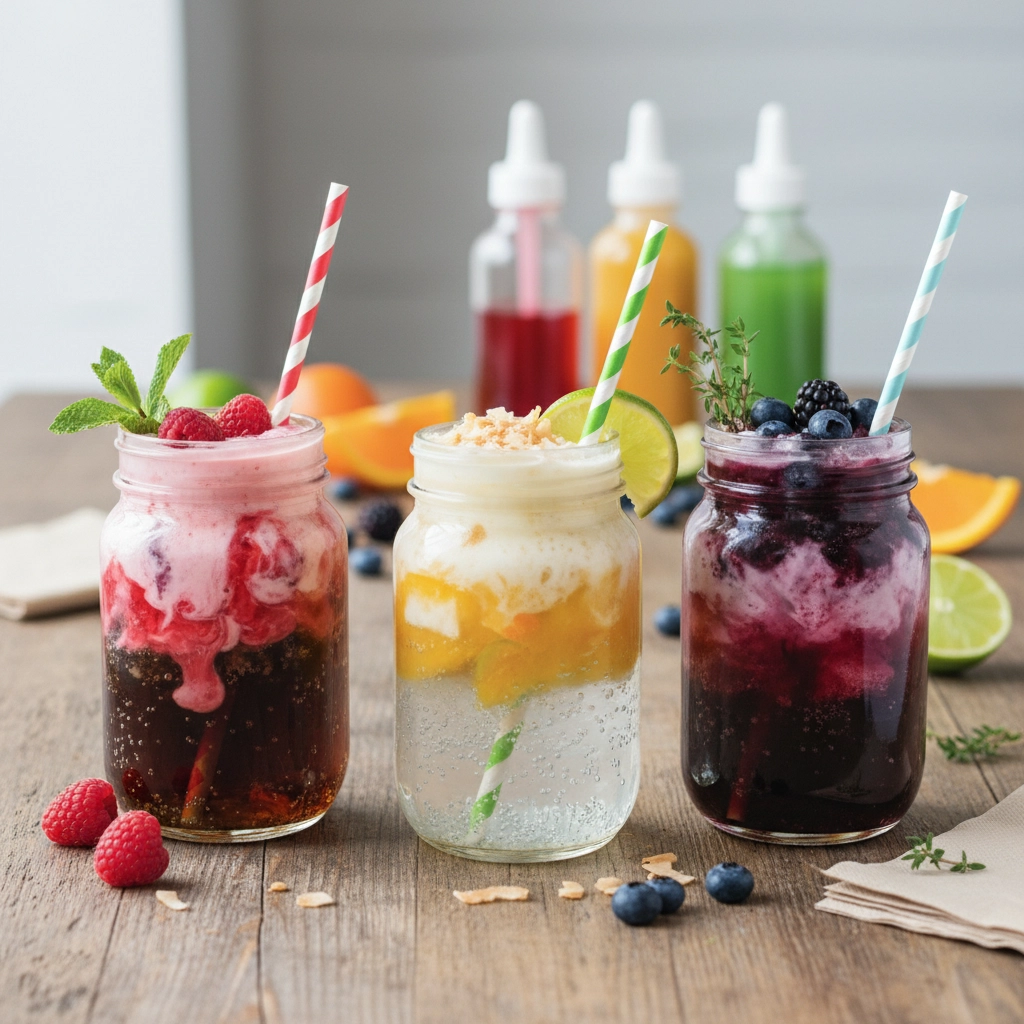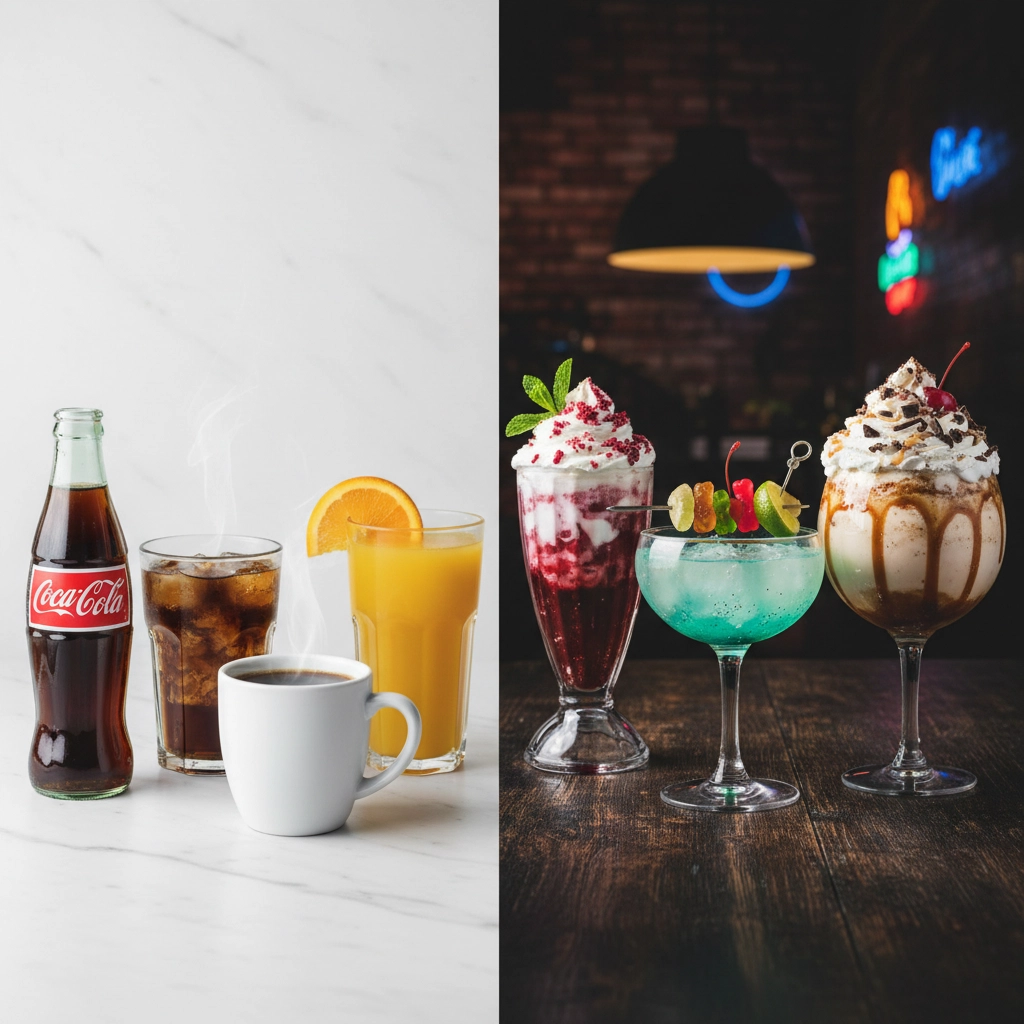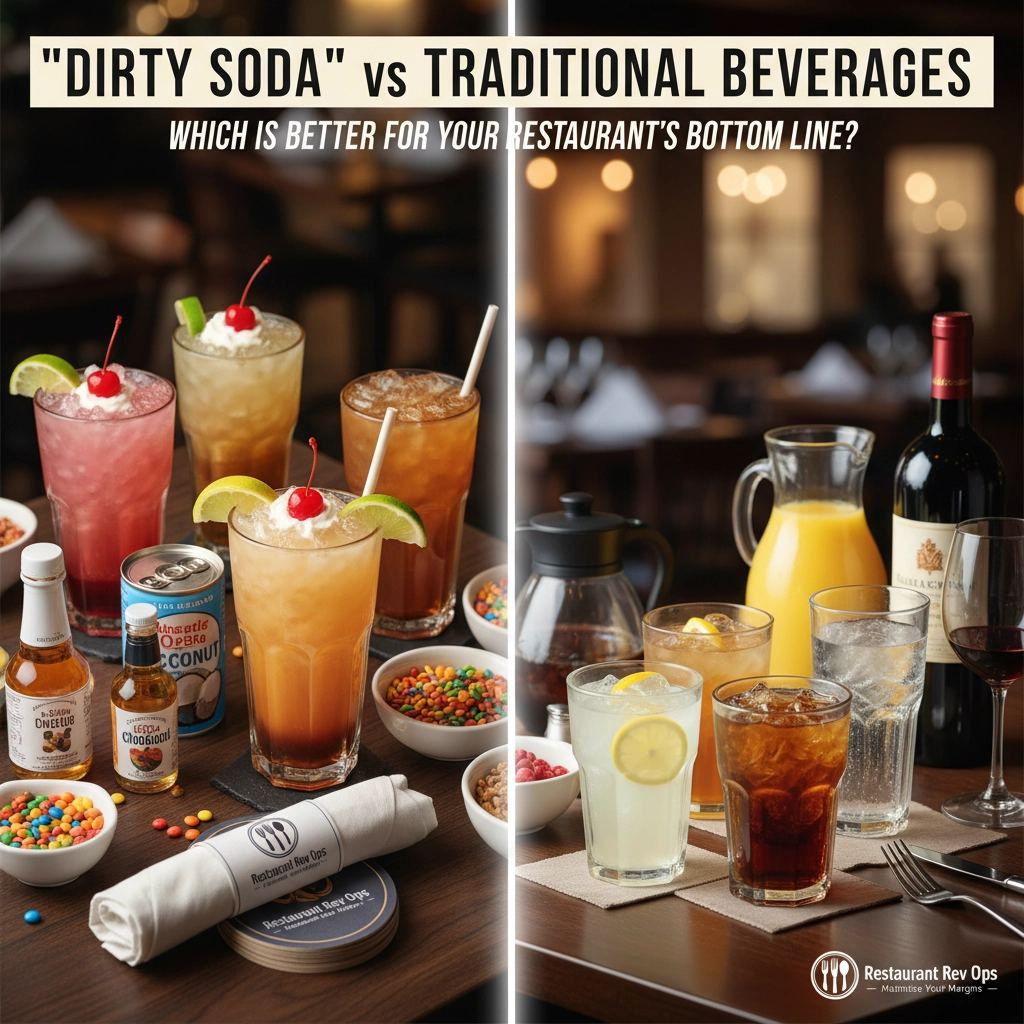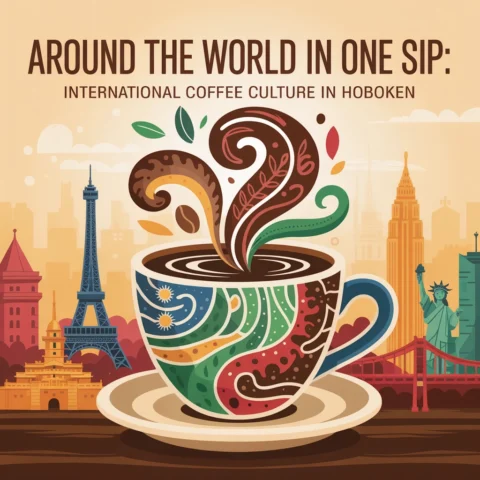The beverage game just got a whole lot more interesting. While your restaurant’s been pouring the same Coke and coffee for years, a sugary revolution has been quietly brewing: and it’s printing money for operators who’ve jumped aboard.
“Dirty sodas” aren’t just another TikTok trend that’ll disappear by next quarter. They’re a legitimate profit powerhouse that’s reshaping how smart restaurateurs think about their beverage programs. But before you start mixing cream into Dr Pepper, let’s crunch the numbers and see if this fizzy phenomenon actually deserves a spot on your menu.
What Exactly Is a Dirty Soda?
Think of dirty sodas as the lovechild of your favorite soda and a coffee shop’s flavor arsenal. At its core, it’s carbonated soft drinks mixed with flavored syrups, cream, fruit, or other add-ins. The “dirty” part comes from Dr Pepper’s nickname in Utah, where this trend exploded thanks to the state’s unique relationship with non-alcoholic indulgences.

The beauty lies in the customization. Customers can transform a basic Coke into a “Raspberry Cream Dream” or turn Mountain Dew into a “Tropical Paradise.” It’s personalization meets instant gratification: two things Gen Z will pay premium prices for.
The Dirty Soda Profit Machine
Let’s talk numbers, because that’s what really matters for your bottom line. The economics of dirty sodas are nothing short of spectacular.
Cost Breakdown:
- Base production cost: approximately $0.70 per 16-ounce serving
- Selling price range: $4-12+ depending on your market positioning
- Profit margins: 75-85% or higher
To put this in perspective, that’s a markup potential of 500-800%. One successful operator reported generating $30,000 in a single week selling dirty sodas, with over $70,000 in revenue over just 2.5 months. These aren’t unicorn numbers: they’re achievable with proper execution.
Why the margins are so attractive:
- Low ingredient costs (syrup, cream, and soda base are inexpensive)
- High perceived value due to customization
- Premium pricing justified by the “artisanal” preparation
- Upselling opportunities with alcohol additions (TGI Fridays charges an extra $3 for spirits)
Traditional Beverages: The Steady Performer
Traditional beverages: your standard sodas, coffee, juices, and basic mixed drinks: represent the reliable workhorses of most beverage programs. While they lack the excitement of dirty sodas, they offer different advantages.
Financial Profile:
- Cost per serving: $0.50-1.50 depending on the beverage
- Selling price: typically $2-4
- Profit margins: 40-60%
- Consistent demand across all demographics
Traditional beverages win on operational simplicity. Your staff already knows how to pour a Coke or brew coffee. There’s minimal training required, established supplier relationships, and predictable costs. However, they offer limited differentiation from competitors and fewer opportunities for premium pricing.

The Operational Reality Check
Before you get too excited about those dirty soda profit margins, let’s discuss what it takes operationally.
Dirty Soda Requirements:
- Staff training for consistent preparation and presentation
- Expanded inventory management (multiple syrups, creams, garnishes)
- Additional prep time per order
- Quality control for customized drinks
- Storage space for various ingredients
Traditional Beverage Advantages:
- Minimal preparation complexity
- Existing staff knowledge
- Streamlined inventory
- Faster service times
- Lower training investment
The key question isn’t whether dirty sodas are more complex: they are. It’s whether the profit premium justifies the operational investment.
Consumer Trends: Who’s Driving Demand?
This is where dirty sodas really shine. They hit multiple consumer trends simultaneously:
Gen Z Appeal: This demographic prioritizes customization and Instagram-worthy experiences. Dirty sodas deliver both. They’re visually striking, endlessly customizable, and provide the social media content that drives organic marketing.
Sober Curious Movement: As more consumers reduce alcohol consumption, dirty sodas offer a sophisticated non-alcoholic indulgence. They provide the complexity and ritual of craft cocktails without the alcohol.
Experience Economy: Customers aren’t just buying a drink; they’re buying a moment, a story, and content for their social feeds. The customization process itself becomes part of the entertainment value.
Marketing and Social Media Goldmine
Here’s where dirty sodas leave traditional beverages in the dust. Every dirty soda order is potential marketing content. Customers naturally want to share their colorful, customized creations, providing free advertising that traditional sodas simply can’t match.
Social Media Benefits:
- High shareability factor
- User-generated content opportunities
- Trend-driven discovery (TikTok, Instagram Reels)
- Seasonal customization possibilities
- Influencer collaboration potential
Smart operators are leveraging this by creating signature dirty soda combinations, seasonal specials, and even dirty soda challenges that encourage social sharing.
Actionable Implementation Strategies
For New Restaurants:
Make dirty sodas a cornerstone of your beverage program. The exceptional profit margins and marketing value justify the operational investment. Consider dedicating a section of your menu to signature combinations.
For Established Operations:
Test dirty sodas as limited-time offerings to gauge customer response. This allows you to assess demand while minimizing risk and training investment. Monitor social media engagement and profit per transaction.
For High-Volume Operations:
Consider self-service dirty soda stations where customers can customize their own drinks. This reduces labor costs while maintaining premium pricing. Think Coca-Cola Freestyle machines, but with a dirty soda twist.
For Upscale Establishments:
Develop alcohol-enhanced dirty sodas to maximize revenue per customer. Premium spirits can justify $12+ price points while appealing to customers seeking unique experiences.

The Competitive Landscape
Major chains are already recognizing the potential. TGI Fridays introduced dirty sodas for $3.99 with alcohol add-ons. Smaller operators are finding even greater success with premium positioning and unique flavor combinations.
The window for first-mover advantage in your market might be closing. Early adopters are establishing themselves as the “dirty soda destination” in their areas, making it harder for later entrants to capture market share.
Risk Considerations
Trend Sensitivity: Dirty sodas are trend-driven, which means they could potentially lose popularity. However, the customization and indulgence aspects suggest staying power beyond typical food trends.
Operational Complexity: More complex drinks mean more opportunities for inconsistency. Proper staff training and standardized recipes are essential.
Inventory Management: Multiple syrups and add-ins increase inventory complexity and potential waste if not managed properly.
The Bottom Line Verdict
The numbers don’t lie: dirty sodas offer significantly higher profit margins than traditional beverages: often 25-45 percentage points higher. When you combine this with their marketing value and consumer appeal, they represent a compelling business opportunity.
However, the most successful strategy likely isn’t choosing one over the other. It’s leveraging dirty sodas as high-margin signature items while maintaining traditional beverages for operational stability and broader customer satisfaction.
The restaurants winning in today’s market are those that can capitalize on trends while maintaining operational excellence. Dirty sodas represent an opportunity to do both: if you’re willing to invest in the training and execution required.
For restaurant owners and beverage directors looking to boost profitability while creating shareable experiences, dirty sodas aren’t just worth considering: they’re becoming essential. The question isn’t whether to add them to your menu; it’s how quickly you can execute them properly.
The beverage landscape is evolving rapidly, and operators who adapt first often capture the most value. Your customers are already seeing dirty sodas on social media. The question is whether they’ll be ordering them from you or your competition.
Looking for more strategies to maximize your restaurant’s profitability? Check out our comprehensive guide on premium pricing strategies and discover how top operators are revolutionizing their beverage programs.
Written by Michael Politz, Author of Guide to Restaurant Success: The Proven Process for Starting Any Restaurant Business From Scratch to Success (ISBN: 978-1-119-66896-1), Founder of Food & Beverage Magazine, the leading online magazine and resource in the industry. Designer of the Bluetooth logo and recognized in Entrepreneur Magazine’s “Top 40 Under 40” for founding American Wholesale Floral. Politz is also the founder of the Proof Awards and the CPG Awards and a partner in numerous consumer brands across the food and beverage sector.







